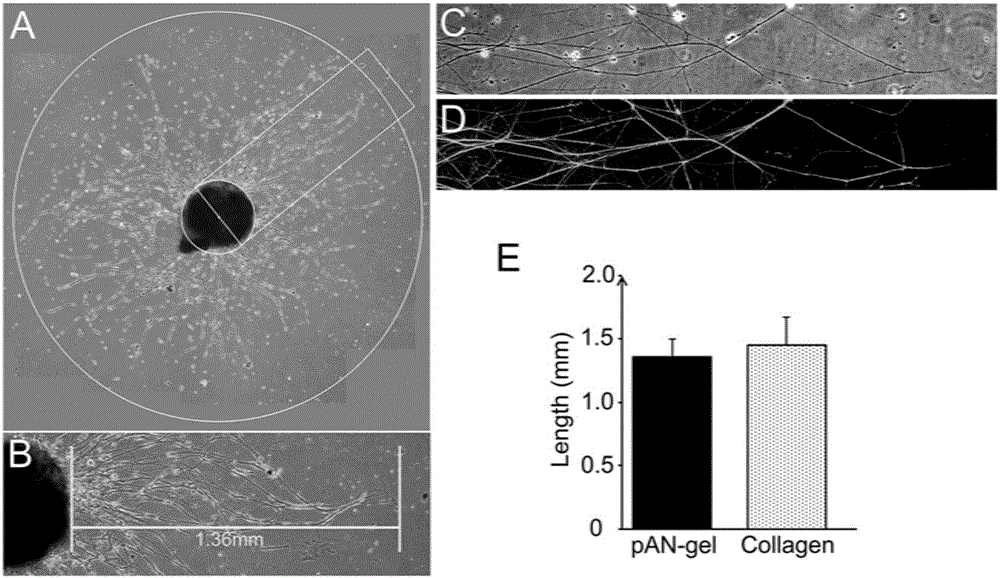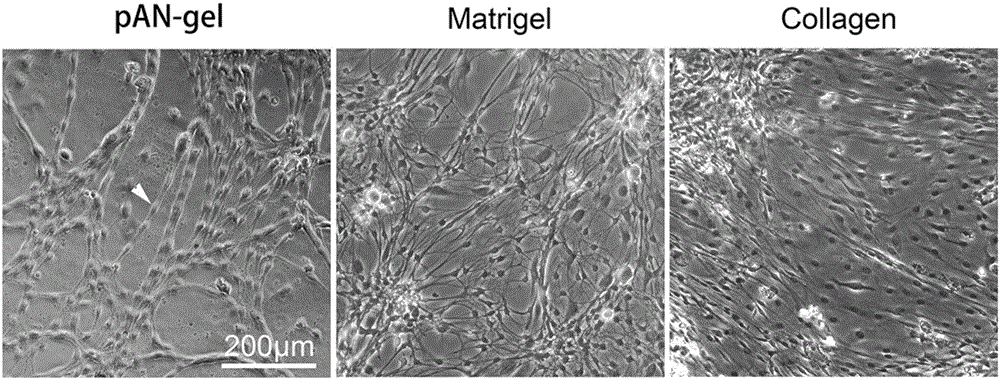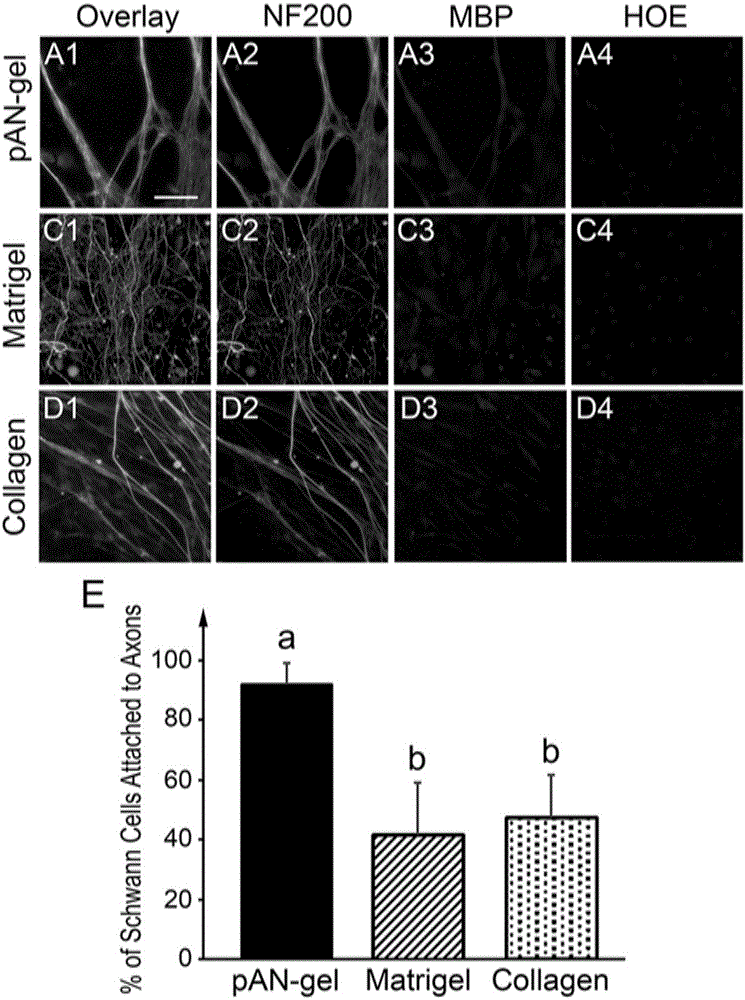Application of acellular nerve hydrogel to preparation of peripheral nerve injury repairing composition
A peripheral nerve and decellularization technology, applied in the field of biomedical composite materials, can solve problems affecting nerve sensory and motor functions, and achieve the effect of repairing peripheral nerve damage
- Summary
- Abstract
- Description
- Claims
- Application Information
AI Technical Summary
Problems solved by technology
Method used
Image
Examples
Embodiment 1
[0035] Embodiment 1: the preparation of hydrogel
[0036] The preparation method of decellularized nerve hydrogel is as follows:
[0037] 1) Take the peripheral nerve of the rat, cut off the fat tissue and epineurium on the surface under an operating microscope, shake the treated nerve in distilled water, and rinse it for 6 hours;
[0038] 2) Extraction: Put the nerve in 3% Triton X100 aqueous solution and shake for 12 hours, then rinse it in distilled water for 3 times, then put it in 4% sodium deoxycholate aqueous solution and shake it at room temperature for 24 hours, and finally rinse it in distilled water for 3 times ; So cycle twice the extraction process;
[0039] 3) Freeze-drying: put the extracted nerve into a mixed solution of ethanol and dichloromethane to degrease, wherein the volume ratio of ethanol to dichloromethane is 1:2, then freeze-dry and grind into powder;
[0040] 4) Dissolution and digestion: Add the lyophilized powder to hydrochloric acid solution to ...
Embodiment 2
[0043] Example 2: Effect test of decellularized nerve hydrogel on axon growth
[0044] The DRG tissues of rats born one day old were taken out, respectively planted in 6-well plates pre-coated with decellularized nerve hydrogel (prepared in Example 1), type I collagen, and two different hydrogels, and cultured at 37°C for 48h After the PH microscope was observed and photographed, the experimental results were as follows figure 1 shown.
[0045] In the figure, A indicates that the neurites can be seen to grow radially around the DRG tissue block on the culture plate coated with decellularized nerve hydrogel, and the inner circle is drawn with the boundary of the tissue block as a reference, and the neurite growth can reach the farthest Draw concentric outer circles for the radius. B: Partial enlarged view showing the growth of neurites and cell migration, and the distance to the furthest distance of neurites was measured from the border of DRG. C and D show neurites and axon...
Embodiment 3
[0046] Example 3: Effect test of decellularized nerve hydrogel on arrangement of Schwann cells
[0047] The DRG tissue block was digested into a single cell suspension (mainly including DRG neurons and Schwann cells), and planted on decellularized nerve hydrogel (prepared in Example 1), Matrigel (#356234, BD) and type I collagen In 24-well plates pretreated with three different hydrogels, observed after 2 days of adherent culture + 7 days of myelinating culture. The result is as figure 2 shown.
[0048] It is known from the figure that the decellularized neural hydrogel environment can induce spindle cells (via image 3Proved to be Schwann cells) linearly arranged in a bead-like structure (marked by the arrow), and bare neurites are rarely seen in the field of view. On the culture plate coated with Matrigel and type Ⅰ collagen, the arrangement of spindle cells was disordered, and a large number of exposed neurites could be seen at the same time. The results show that the ...
PUM
 Login to View More
Login to View More Abstract
Description
Claims
Application Information
 Login to View More
Login to View More - R&D
- Intellectual Property
- Life Sciences
- Materials
- Tech Scout
- Unparalleled Data Quality
- Higher Quality Content
- 60% Fewer Hallucinations
Browse by: Latest US Patents, China's latest patents, Technical Efficacy Thesaurus, Application Domain, Technology Topic, Popular Technical Reports.
© 2025 PatSnap. All rights reserved.Legal|Privacy policy|Modern Slavery Act Transparency Statement|Sitemap|About US| Contact US: help@patsnap.com



